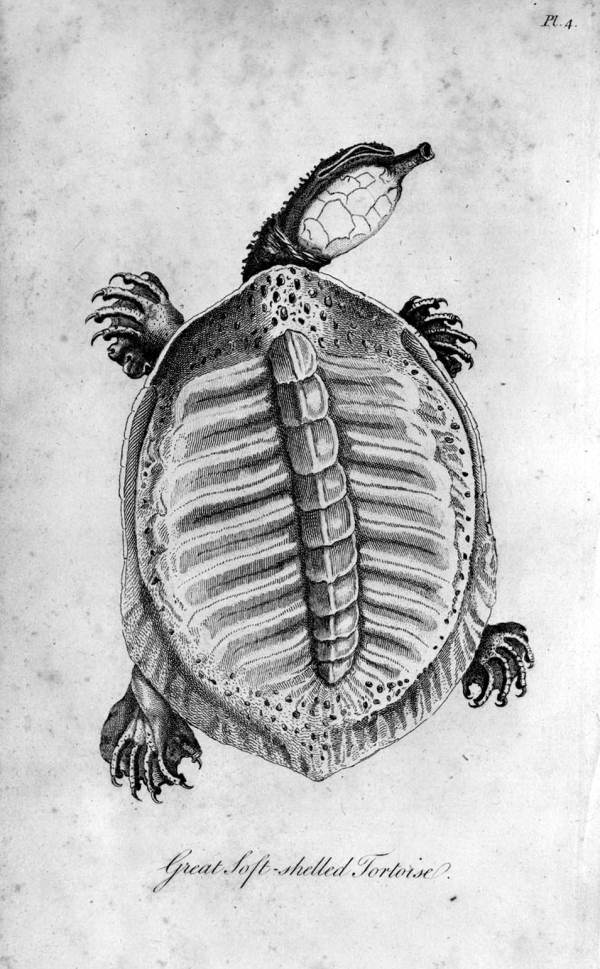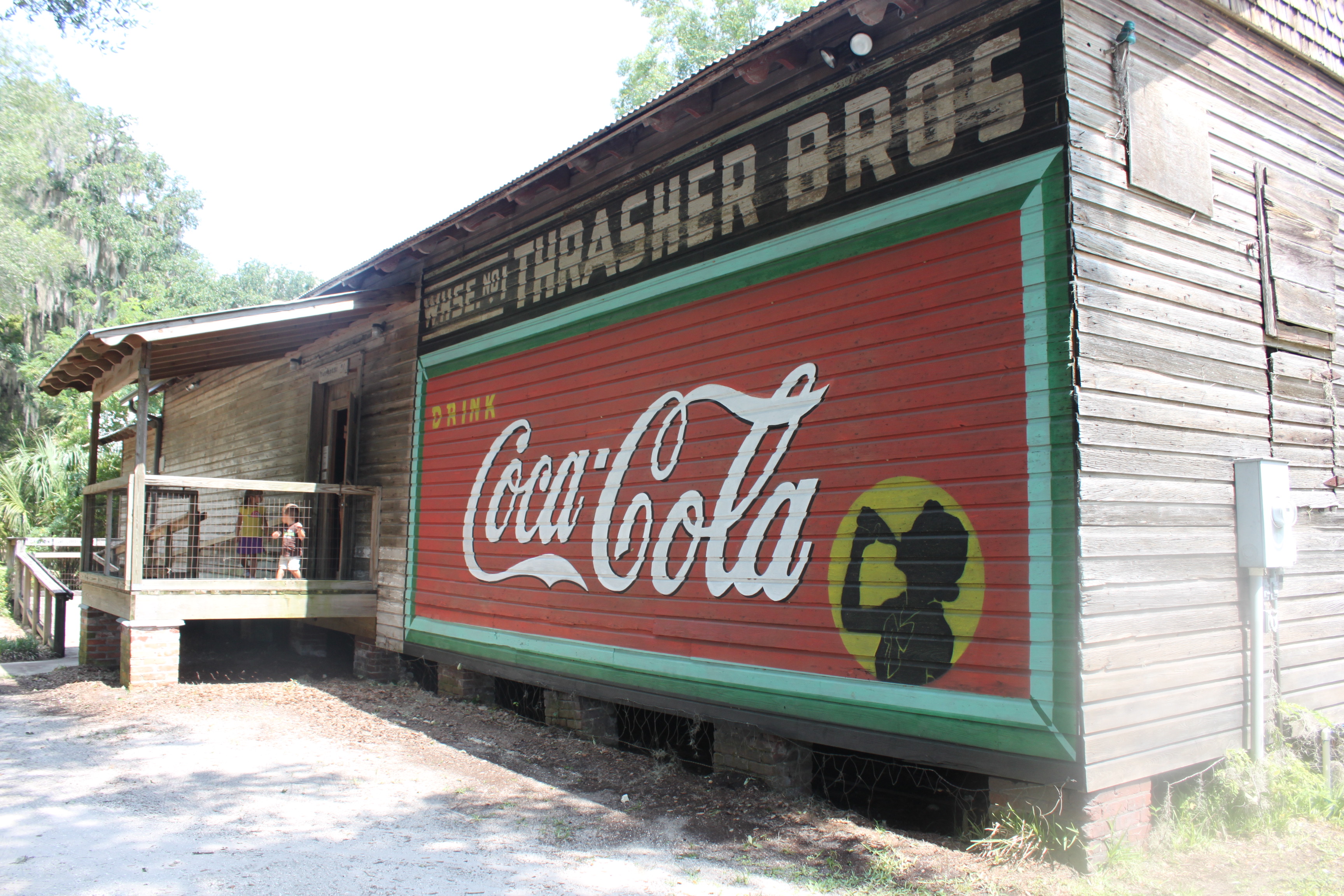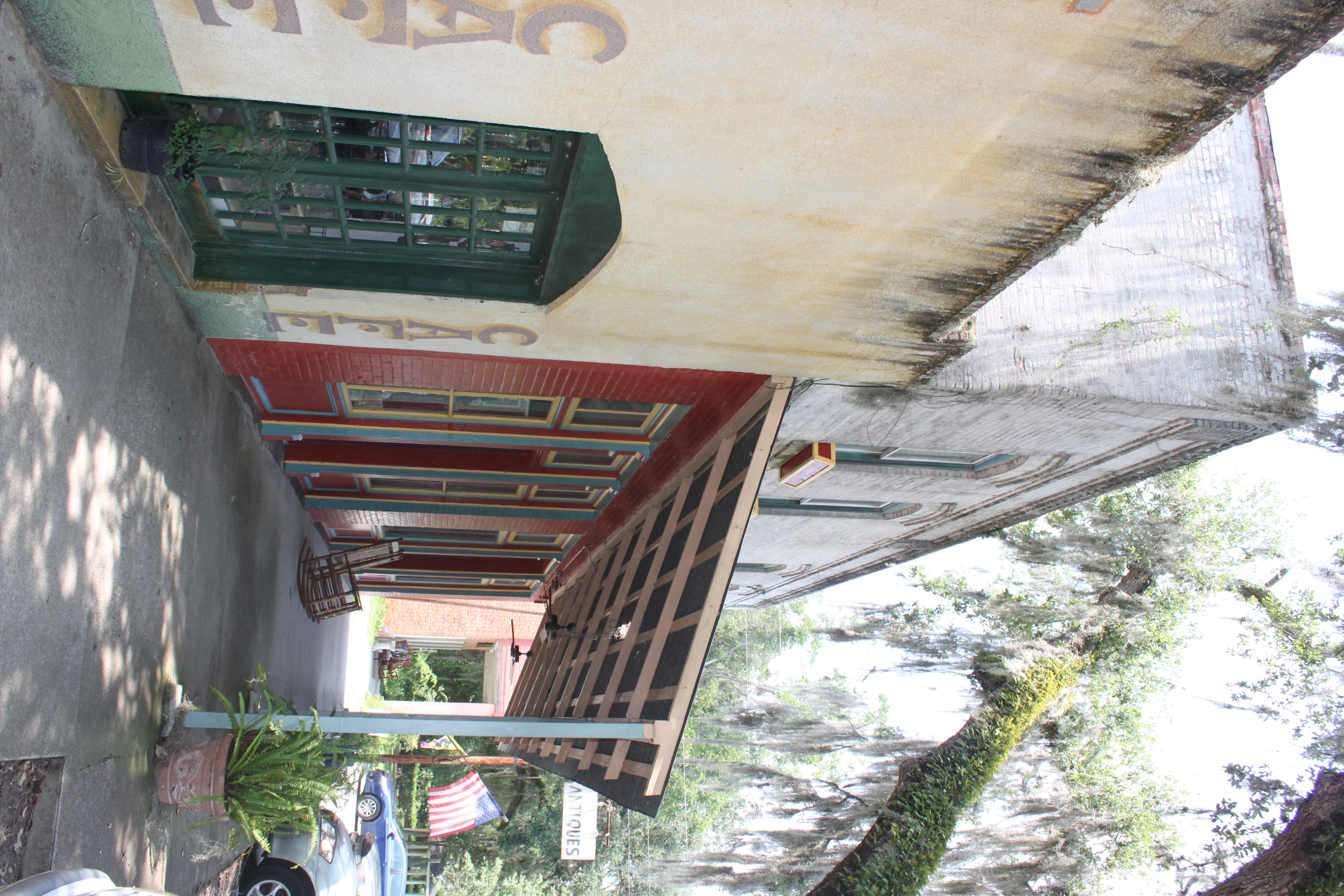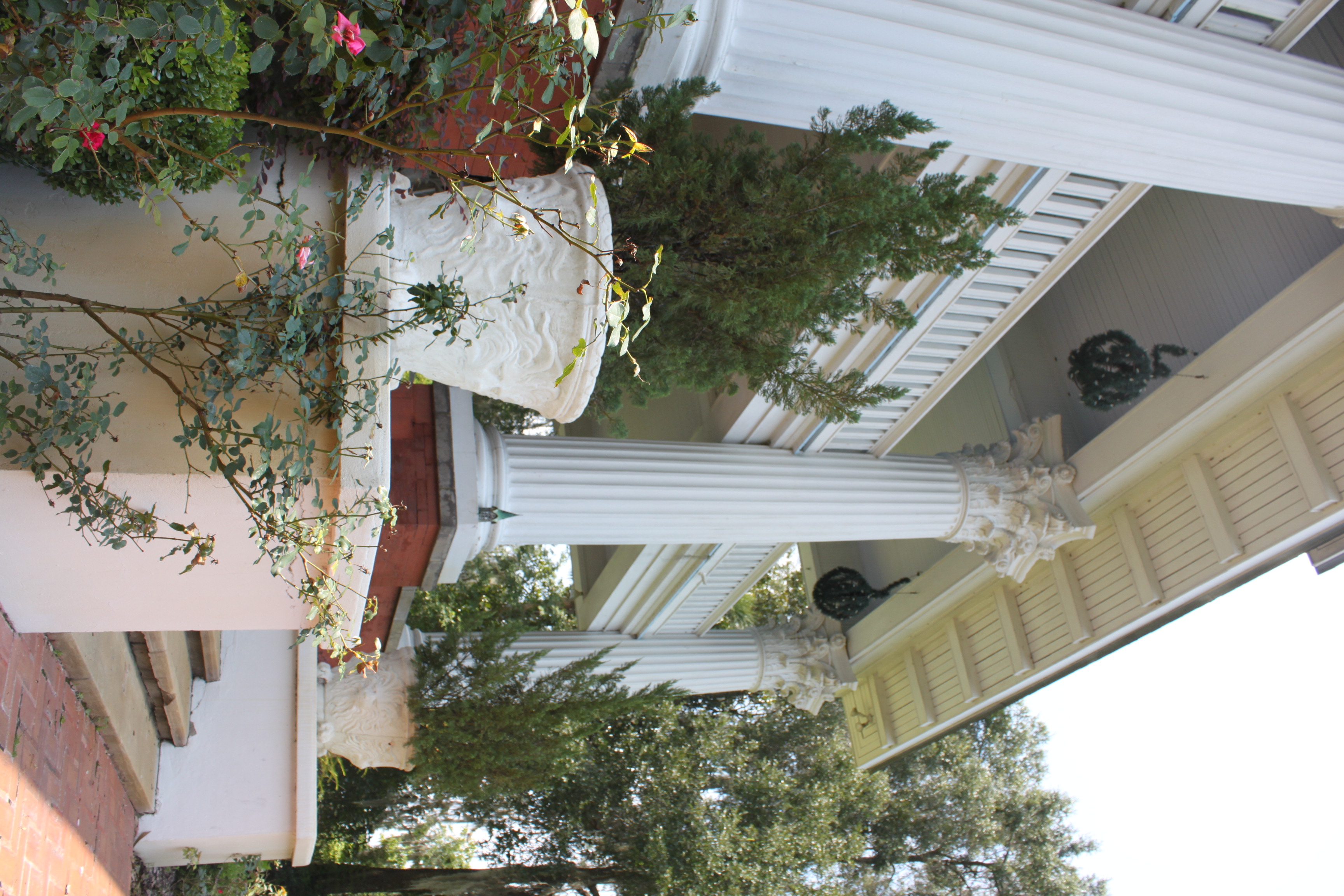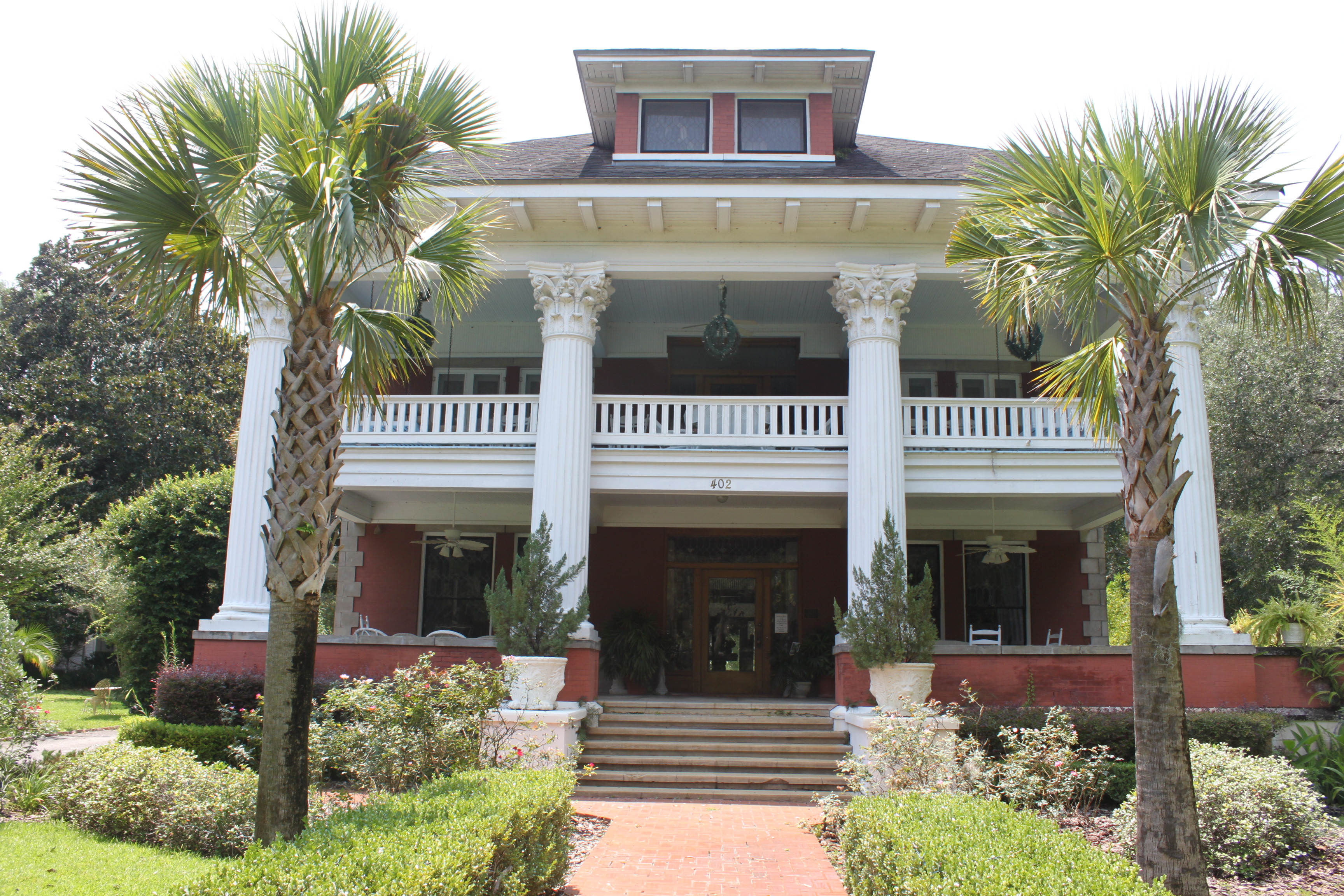Micanopy, FL: The Little Town that Time Forgot
BY LESA.LORUSSO ON JULY 6, 2012 IN FLORIDA HISTORICAL SOCIETY
What better way to celebrate the fourth of July than to visit one of Florida’s oldest and, in my opinion, most beautiful historic towns? Micanopy, pronounced: [MICK · uh · NO · pee ], is a beautiful blend of majestic oak trees standing like great southern ladies placidly waving fans of Spanish moss, Florida vernacular architecture and a commercial district proudly maintaining its historic heritage. The town was originally founded in 1821 and is believed to be the oldest inland town in Florida (1). This beautiful southern community was named for Chief Micanopy of the Seminole Nation and has graced the pages of Southern Living and wooed filmmakers for years (think Doc Hollywood and Cross Creek).
Sometimes called “the little town that time forgot,” Micanopy is located in north central Florida just twenty minutes south of Gainesville near Tuscawilla Lake and the National Natural Landmark Paynes Prairie Preserve. As early as 1539 Spanish explorer and conquistador Hernando De Soto recorded a village inhabited by the Timucuan tribe on the site of modern day Micanopy. Over two hundred years later, an American naturalist and artist from Pennsylvania named William Bartram encountered a Seminole village named Cuscowilla on the site. The Seminole people were remnants of the Southern Creek Nation whose name is derived from a Creek word meaning “runaway.” The Seminoles had become wealthy by raising cattle and horses on land now known as Paynes Prairie (2). In 1774 Bartram was exploring the predominantly uncharted American southeast and travelled inland from the St. John’s River to what he called the Alachua Savanna, which was the present-day Paynes Prairie Preserve.
While studying the native flora and fauna of the area for his classic novel “Travels of William Bartram” he befriended the Seminole people who nicknamed him ‘Puc Puggy,’ meaning “Seeker of the Flowers.” (3). Keeping true to his Quaker background, Bartram originally arrived in Florida as a peace-loving British subject, returning to Philadelphia three years later as a citizen of an emerging American nation. (Interestingly, while he traveled his 2400-mile trip, the thirteen British colonies began the War of Independence) Bartram noted the numbers of Spanish cattle and horses in the Alachua Savanna, likely vestiges of the Spanish influence in that area, and believed the herds to rival those of the Pennsylvanian farms of his youth. The area now known as Micanopy was later included in a land grant made by the King of Spain in 1817 to Don Fernando del la Maza Arredondo of Havana and St. Augustine. Eventually the fertile soil was used to produce sugar cane and then citrus.
Not long after Florida became a U.S. territory in 1821, Edward M. Wanton was hired to promote settlement in the area, and in 1823 Moses Elias Levy established the first official American settlement. (A fascinating book on the life of Mosas Levy, titled Moses levy of Florida: Jewish Utopian and Antebellum Reformer by C.S. Monaco can be purchased through the Florida Historical Society’s bookstore) The first post office established in Alachua County in 1826 was named after Wanton. An American fort was built in this area in 1831 to protect settlers from hostile attack and remained until after the Second Seminole War (1835-42). Micanopy has been continuously settled by Americans since 1821 and is proud to have its designation on the National Register of Historic Places in 1983. The town was simultaneously referred to as “Micanope” and “Micanopy” which come from the Creek word for “head chief.” The name officially changed to “Micanopy” in 1834 (2).
Since its designation on the National Register of Historic Places, many of the commercial buildings and beautiful historic homes have been restored. A stroll down Main Street in Micanopy is an idyllic salve for frayed urban sensibilities. Main Street is an eclectic mixture of commerce including a hauntingly beautiful Greek revival mansion replete with massive corinthian columns, a museum housing the Micanopy Historical Society, and a variety of shops selling everything from antique collectibles, musical instruments, books, and ice cream to organic food and household products.
Today, this tiny jewel of Alachua County is also an enclave for employees of the nearby University of Florida. A convenient twenty-minute drive from the nearby university, Micanopy has become home to many academics that seem to matriculate well with the friendly, easy-going local residents. My “Uncle Rob,” Dr. Robert N. Pierce, was one of these academics that sought the quiet solitude of this unaffected community. Retired as Professor Emeritus of Journalism from the University of Florida in 1995, Uncle Rob served as the president of the Micanopy Historical Society. As an active member in this bucolic community, he played an integral role in the establishment of the Micanopy Historical Society’s museum located in the old Thrasher Co. warehouse and was a longtime member of the historic and picturesque Episcopal Church of the Mediator. One of the highlights of his year was reading “The Night Before Christmas” at the town sing-along during the Christmas season.
Understandably, some of the best ways to describe Micanopy and its residents are quaint, friendly and eclectic. Throughout its historically illustrious past with inhabitants ranging from Seminole chieftains to Tom Petty, the town remains humble and unpretentious. Like a beautiful southern lady, Micanopy charmingly invites visitors to sit down on any of the many verandahs to enjoy friendly conversation and a glass of iced tea while you take in the lovingly restored architectural surroundings.
For more on Micanopy click here
For more on the Micanopy Historical Society click here
For more on William Bertram and his Florida travels click here
For information on the Herlong Mansion Bed and Breakfast click here




